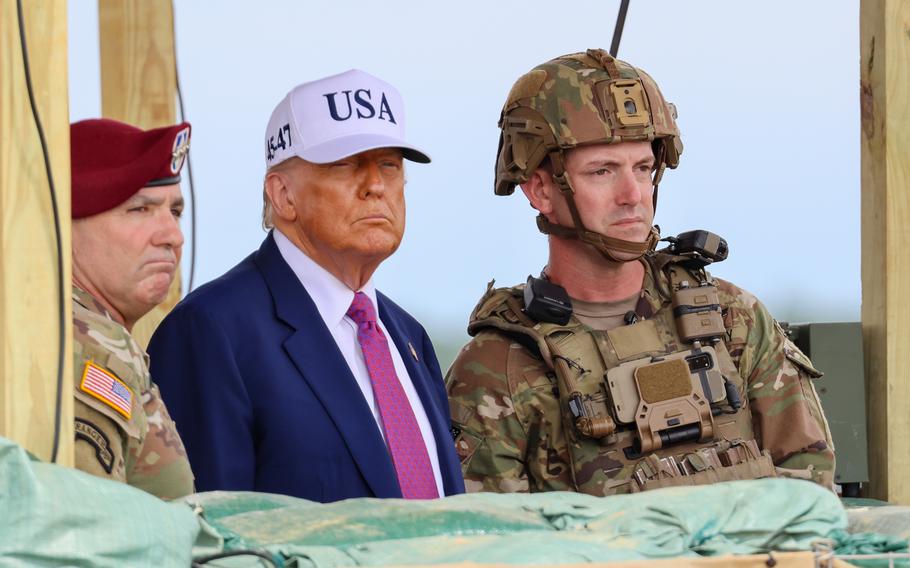
President Donald Trump watches a military exercise at Fort Bragg, N.C., June 10, 2025. (Allan Cogan/U.S. Army)
President Donald Trump said Tuesday that tariffs he plans to impose on South Korea are intended to “even out” what he described as an imbalance between trade and the cost of stationing U.S. troops on the peninsula.
Speaking at a White House press conference, Trump criticized the United States’ trade deficits with countries such as South Korea, calling them part of a series of “bad deals” made by previous administrations.
Trump announced the tariffs Monday in open letters posted to his Truth Social account. The measures include a 25% tariff on imports from South Korea and Japan and are scheduled to take effect Aug. 1. In total, the tariffs affect imports from 14 countries.
A trade deficit occurs when a country imports more goods than it exports to another nation. U.S. exports to South Korea totaled $65.5 billion in 2024, while imports from the South reached $131.5 billion, according to data from the Office of the U.S. Trade Representative.
“We rebuilt it, and we stayed there, and they pay us very little for the military,” Trump said, referring to the U.S. defense of South Korea since the 1950-53 Korean War.
In a text message Wednesday, the South Korea’s Ministry of Foreign Affairs said it is “inappropriate to respond and evaluate every comment by a foreign leader.”
The Special Measures Agreement dictates how much Seoul is expected to pay Washington to station approximately 28,500 U.S. troops in South Korea. The money pays a variety of costs, including constructing projects and the hiring of local employees in U.S. bases.
In November, South Korea agreed to pay $1.1 billion annually starting in 2026 — a $200 million increase over the previous five-year agreement. The deal was renegotiated under former Presidents Joe Biden and Yoon Suk Yeol.
Under the terms of the new agreement, South Korea’s contribution is expected to rise annually between 2027 and 2030, based on its consumer price index.
During his first term, Trump frequently said South Korea was not paying enough for U.S. protection and suggested Seoul should contribute between $5 billion and $10 billion per year. Independent experts have noted that U.S. presidents have authority to renegotiate the agreement before it expires.
“I got them to pay billions of dollars and Biden then canceled it when he came in,” Trump said Tuesday, adding that the U.S. was providing South Korea with a “free military.”